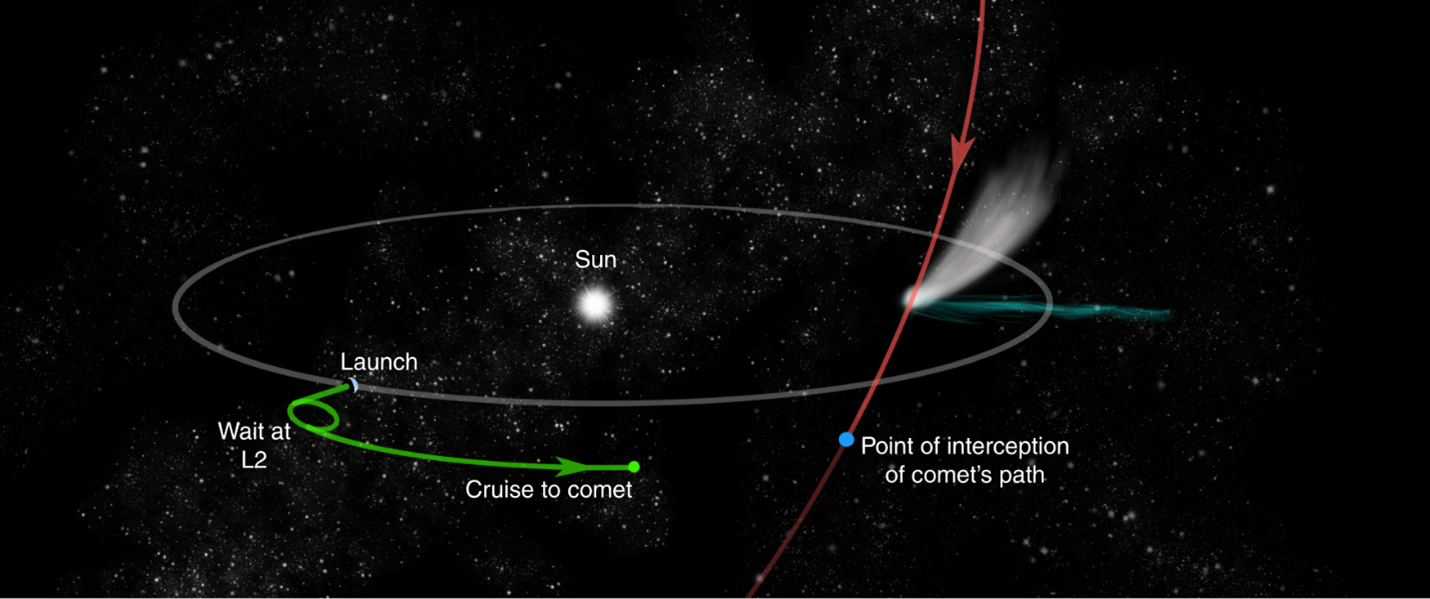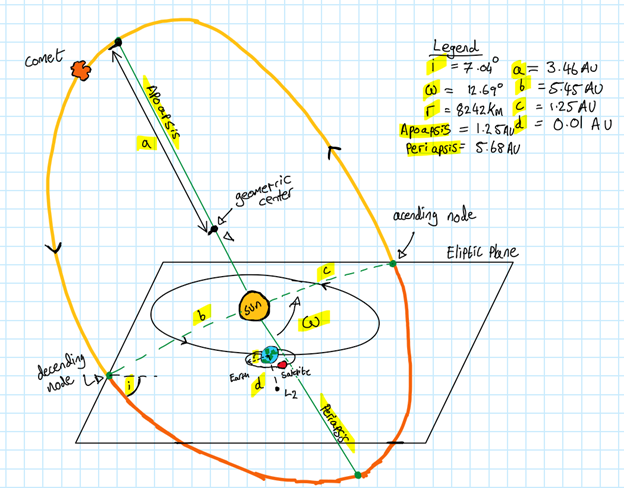Interplanetary Orbit Transfers for Comet Interceptor Mission
| Module Title: EMS610 Spacecraft Design: Manoeuvring and Orbital Mechanics | Location: London, UK | Dates: Feb 2024 - Apr -2024 |
This project involves the design and planning of the Comet Interceptor mission as part of the EMS610 coursework. The goal is to develop a spacecraft capable of launching into a halo orbit around the Sun-Earth L2 Lagrangian point, waiting for a comet target, and subsequently executing an interplanetary transfer to rendezvous with the comet.
Project Overview:
Mission Concept: The Comet Interceptor will be launched as a secondary payload on an M-class mission, scheduled for 2028. Its unique design allows for operation without a predetermined target comet, capitalising on advancements in sky survey technologies that enable early detection of incoming comets.
- Orbit and Transfers: Using the Patched Conic Method, the coursework involves calculating the ∆V requirements for two primary manoeuvres:
- Transfer to L2: Estimating the ΔV needed to transfer the spacecraft from its parking orbit in the Earth’s equatorial plane to a halo orbit around the L2 point.
- Cruise to Target Comet: Once a comet is identified, determining the ΔV necessary to intercept the comet, bringing the spacecraft within 500 km of its surface.
- Fuel Efficiency: The design takes advantage of the stable gravitational balance at the L2 point, minimising fuel usage for both station-keeping and trajectory adjustments when approaching the comet.
Figure 1: Mission Phases 
Figure 2: Sketch of the Comet Orbit

For more information, refer to my paper on the Comet Interceptor mission here.
Learning Outcomes:
This project has enhanced my understanding of orbital mechanics and spacecraft manoeuvring strategies, particularly in the context of designing flexible missions capable of adapting to unknown targets.
Key Skills: Orbital Mechanics, Patched Conic Method, Spacecraft Design, Mission Planning, Analytical Problem Solving.
